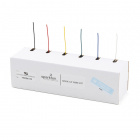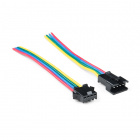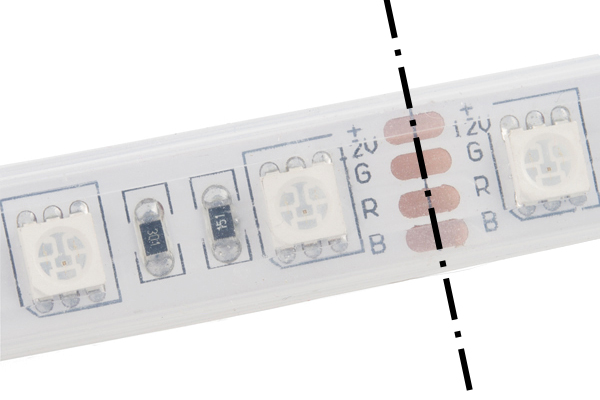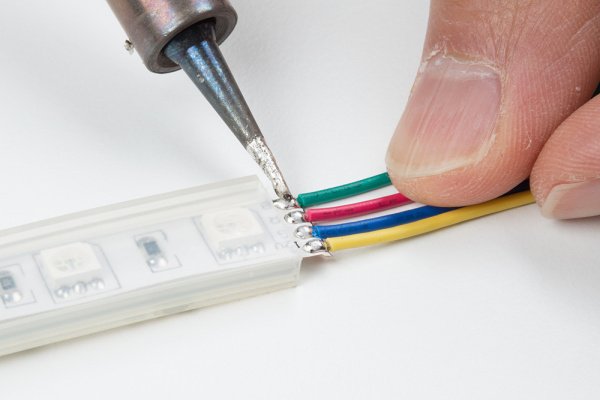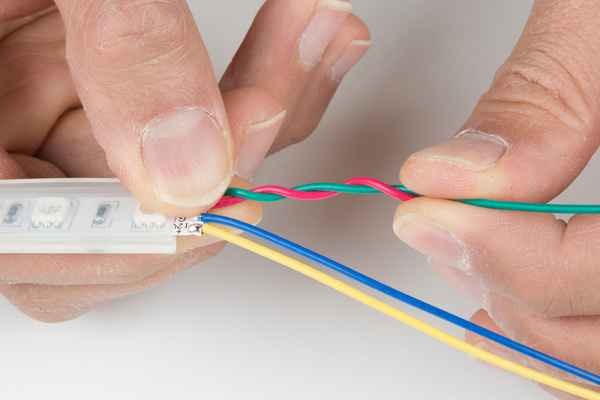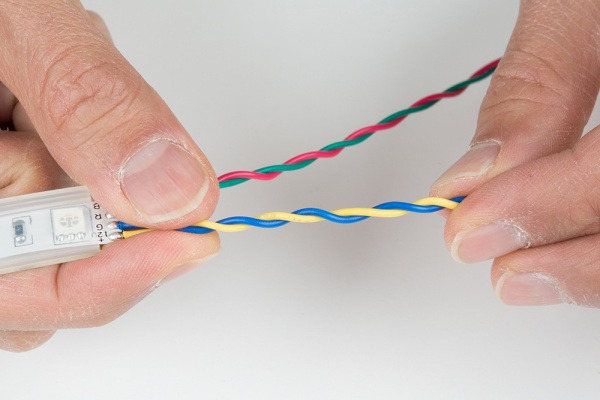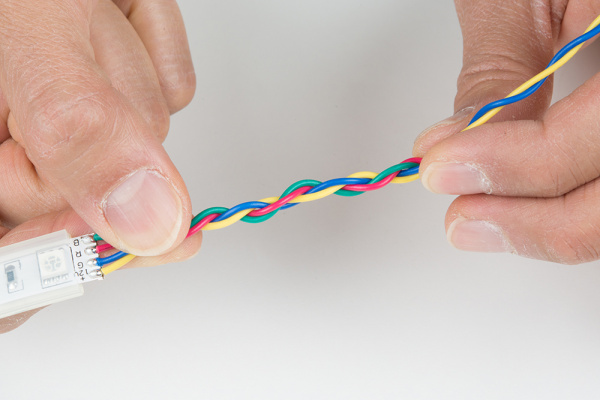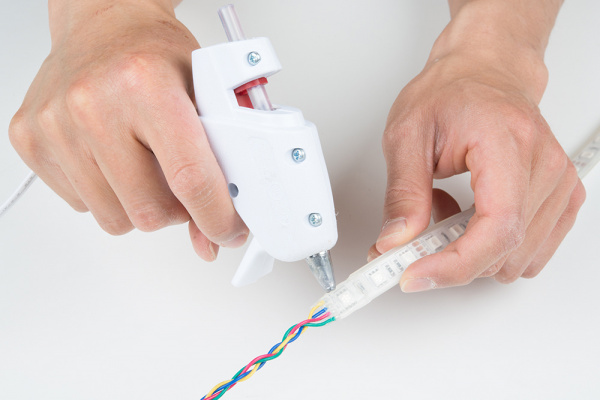Non-Addressable RGB LED Strip Hookup Guide
Modifying RGB LED Strip
Depending on your project, you may not need to use all 1M or 5M of the LED strip. You can cut off the excess and use it for other projects. Or you may need to separate the strip and extend the wires to illuminate other parts of your project. You may even need to inject power at a certain length. Let's go over how to cut, rewire, clean, and reseal a sealed LED strip.
First, cut the LED strip at the center of the exposed pads using a diagonal cutter. The dot and dashed line in the image below is where you will need to perform the cut. Make sure to remove part of the silicone tube to access the LED strip's pads if you are using the sealed version.
Cut half of the premium jumper wires and strip the insulation. Then solder the wires to each of the LED strip's pads.
For a secure connection, you can braid the wires together to manage the connections. To braid your wires, twist a pair of wires in a counterclockwise pattern between your index finger and thumb using both hands. We'll be using the green and red wires that were soldered on.
Then twist the other pair of wires in a counterclockwise pattern.
Twist the pairs of wires in a clockwise pattern.
Clean Solder Joints
If you were using water soluble flux, clean the solder joints with deionized water and a toothbrush. Dry the LED strips thoroughly using compressed air. Luckily, SparkFun has a PCB cleaning room. As an alternative, you could use water from the sink and towels. You can also use isopropyl alcohol.
Test LED Strips
Once dry, test the LED strips to ensure the colors are correct and the wires are connected to its respective pads. You can use a benchtop power supply set to output about 12V, a 12V wall adapter, or 9V battery to verify the connection. The image below shows all the channels turned on. Make sure to test each channel individually.
Secure w/ Hot Glue or Heat Shrink
Add hot glue to the terminals to secure the wires further. You can also use some heat shrink with hot glue as long as it does not cover the LED. The image below shows the wires being secured with hot glue. The LED strip was used with a silicone tube so additional hot glue was added to seal the exposed strip.
